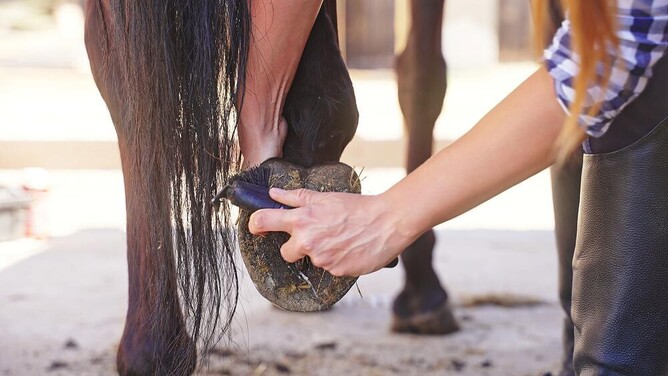The recent cold and wet weather reminds us that winter is coming, which brings with it some other nasties.
There are several proactive measures we can take to help minimise the risk of hoof abscesses occurring in our equine friends.
Important measures that aid in the prevention of hoof abscesses include maintaining excellent hoof health, and creating better environmental conditions for the feet.
Many horses have shoes removed over the winter, but it is important that the feet continue to have regular trimming to prevent long toes, stretched white lines, and cracks - all of which provide paths of entry for bacteria into the hoof capsule.
Sole bruises are the other main way that bacteria enter into the hoof.
The presence of bacteria inside the hoof results in an accumulation of pus. The hoof cannot expand to relieve the pressure this causes, resulting in the severe, sometimes non-weight bearing, lameness often seen with a hoof abscess.
Standing in a constantly moist environment, such as muddy winter paddocks, compromises hoof wall integrity and provides more opportunity for bacterial invasion. It also increases the risk of pastern dermatitis (or ‘mud fever’): the other winter plague.
If there is the possibility to stand horses off wet paddocks for periods of the day or night on dry areas such as stables, yards, or areas beneath trees or hedges, this should be utilised. It will allow the hooves and lower limbs to dry out.
Signs of a hoof abcess
If your horse develops a sudden onset of severe lameness then a hoof abscess should be suspected.
Other signs that may be seen include:
Increased digital pulses (ask your vet to show you where to feel for this);
Mild to moderate swelling of the lower limb;
Heat in the foot.
Treatment options
The main goal of treatment is for your vet or farrier to obtain drainage through the sole of the foot, and then to keep the foot clean to prevent reformation of the abscess.
It is often necessary to soften the hoof using a poultice such as Animalintex, or regular soaking of the hoof in warm water and epsom salts to aid in abscess release.
Abscesses can also track up the hoof and break out through the coronary band. Prior to this, a soft, painful area on the coronary band can often be felt.
It can take a few days for an abscess to burst, and when it does, this provides instant relief to the horse and a dramatic improvement in lameness is usually noticed.
It may be necessary to provide pain relief such as phenylbutazone (bute) for a hoof abscess. Antibiotics are usually not necessary for an uncomplicated hoof abscess.
Horses can also get tetanus from a hoof abscess, as the tetanus bacteria lives in the soil and grows in conditions without oxygen, such as in the middle of a hoof abscess. This is a good reason to make sure your horse is up to date with vaccinations heading into winter.

